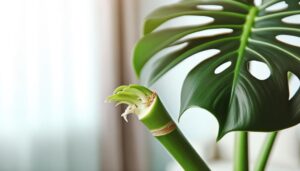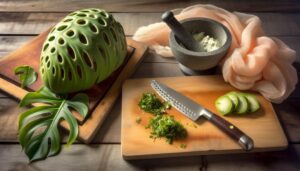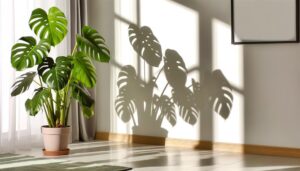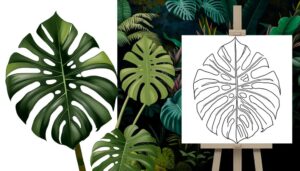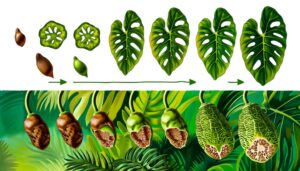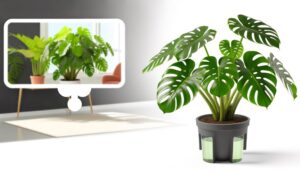Comparison: Monstera Deliciosa Large Form Vs Small Form
When comparing Monstera Deliciosa large form and small form ('Borsigiana'), key differences arise. The large form can reach up to 20 meters with leaves up to 90 cm, featuring deep fenestrations.
In contrast, the small form rarely exceeds 3 meters indoors, with leaves up to 60 cm and fewer fenestrations. While the large form thrives in tropical environments and grows slowly but robustly, 'Borsigiana' is preferred for indoor cultivation due to its compact and faster growth.
Both forms need well-draining, nutrient-rich soil, high humidity, and indirect light. For a detailed exploration of these distinctions, further insights await.
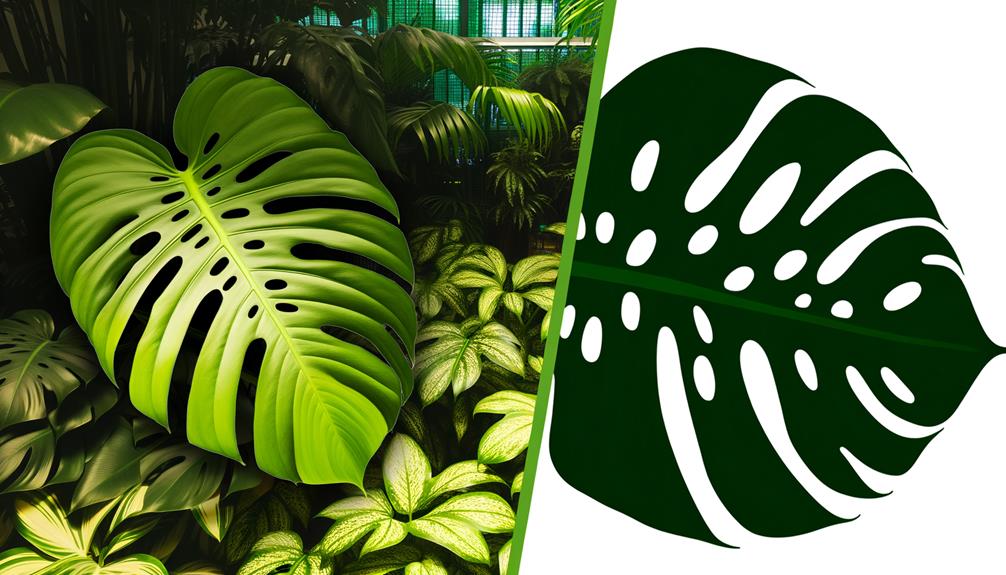
Key Takeaways
- Large form can reach 20 meters, while the small form stays under 3 meters indoors.
- Large form has leaves up to 90 cm with deep fenestrations; small form has up to 60 cm leaves with fewer fenestrations.
- Small form grows faster and more compactly compared to the slower, robust growth of the large form.
- Both forms require well-draining, nutrient-rich soil, high humidity, and bright, indirect light.
- Large form thrives in tropical environments; small form is ideal for indoor cultivation due to its compact size.
Size and Growth Habit
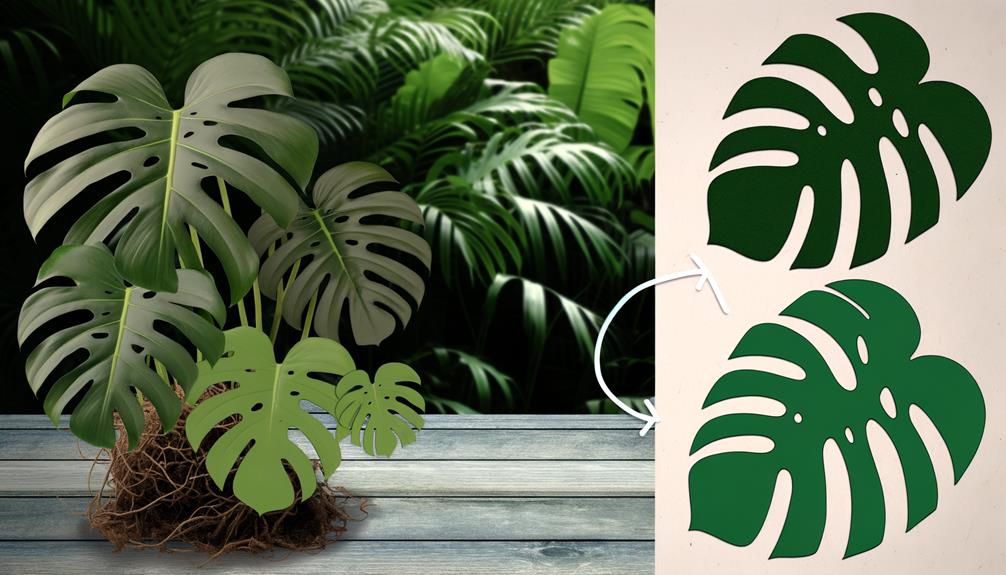
The size and growth habit of Monstera deliciosa can vary significantly between the large and small forms, with the large form typically reaching heights of up to 20 meters in its natural habitat, while the small form generally attains a more modest stature.
The large form exhibits vigorous climbing behavior, supported by robust aerial roots that anchor the plant to trees. In contrast, the small form, often referred to as Monstera deliciosa 'Borsigiana,' displays a more compact growth pattern, rarely exceeding 3 meters indoors.
Ideal growth conditions for both forms include well-drained, nutrient-rich soil, high humidity, and indirect light. The large form thrives in tropical environments, whereas the small form adapts well to indoor cultivation, making it a popular choice for houseplant enthusiasts.
Leaf Structure
Concerning leaf structure, Monstera deliciosa large form features notably larger and more deeply fenestrated leaves compared to the smaller and less perforated leaves of Monstera deliciosa 'Borsigiana'. The large form's leaves can exceed 90 cm in length, with pronounced splits and holes aiding in light penetration and wind resistance. In contrast, 'Borsigiana' exhibits leaves typically under 60 cm, with fewer and smaller fenestrations. Both forms prefer indirect light and high humidity, but the large form requires more space to accommodate its expansive foliage.
| Characteristic | Large Form | 'Borsigiana' |
|---|---|---|
| Leaf Size | Up to 90 cm | Up to 60 cm |
| Fenestrations | Deep and numerous | Shallower and fewer |
| Light Requirements | Indirect light | Indirect light |
| Humidity Preference | High | High |
| Space Requirements | Requires more space | Requires less space |
Growth Rate
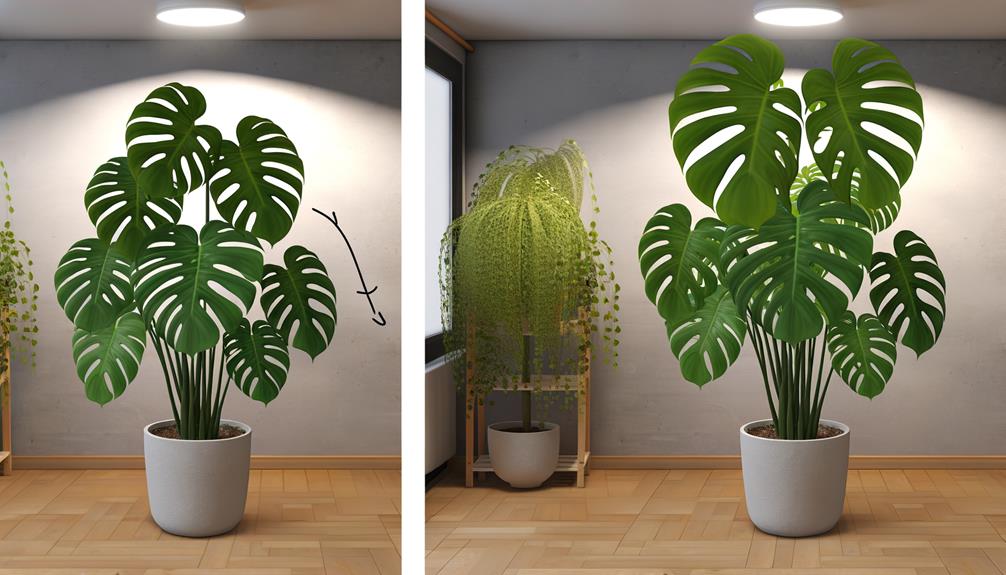
Growth rate analysis reveals that Monstera deliciosa large form exhibits a slower yet more robust growth pattern compared to the relatively faster and more compact growth of Monstera deliciosa 'Borsigiana'.
The large form typically demands more time to establish its root system, resulting in a gradual but substantial increase in biomass. Conversely, 'Borsigiana' demonstrates a quicker vegetative growth rate, characterized by rapid leaf production and stem elongation.
Environmental factors such as light intensity, humidity, and temperature play a pivotal role in modulating growth rates. Ideal conditions for both forms include bright, indirect light, high humidity (60-80%), and temperatures ranging from 18-27°C. These parameters significantly influence the metabolic processes, thereby affecting overall growth dynamics.
Care Requirements
Proper care requirements for Monstera deliciosa large form and Monstera deliciosa 'Borsigiana' necessitate a thorough understanding of their distinct needs regarding soil composition, watering frequency, and fertilization regimens. Both varieties thrive in well-draining, nutrient-rich soil with a slightly acidic to neutral pH.
Best watering schedules involve maintaining consistently moist soil without waterlogging; typically, this means watering when the top inch of soil feels dry. Fertilization should be performed monthly during the growing season using a balanced, water-soluble fertilizer.
Though both forms share similar care routines, the large form may necessitate slightly more frequent watering due to its larger foliage and greater transpiration rates, demanding more precise monitoring to prevent root rot or nutrient deficiencies.
Ideal Environment
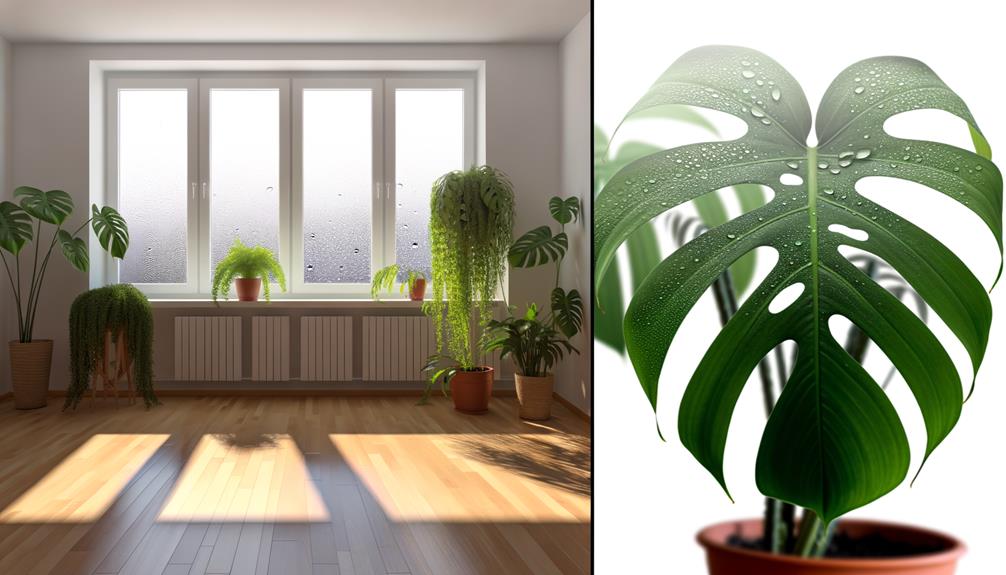
The perfect setting for Monstera deliciosa large form and Monstera deliciosa 'Borsigiana' is characterized by bright, indirect light, high humidity levels, and consistent temperatures ranging between 65°F to 85°F (18°C to 29°C). These conditions mimic their native tropical habitat, promoting prime growth and health.
To sustain such a setting, consider the following:
- Light: Provide filtered sunlight to prevent leaf burn and encourage vibrant foliage.
- Humidity: Aim for humidity levels above 60% to support lush, vigorous growth.
- Temperature: Keep temperatures stable, avoiding drafts and sudden fluctuations.
- Soil: Utilize well-draining, aerated soil to prevent root rot and promote nutrient uptake.
These parameters are essential for both Monstera forms to thrive, ensuring strong development and improved fenestration patterns.
Conclusion
Monstera deliciosa exhibits remarkable differences between its large and small forms. The large form can achieve leaf spans up to 3 feet, whereas the small form typically reaches only 1 foot.
Both forms display characteristic fenestration, yet the large form exhibits more pronounced perforations. Growth rates vary, with the large form growing more rapidly.
Best care requirements include indirect sunlight, well-draining soil, and high humidity. Interestingly, the large form can grow up to 2 feet per year, highlighting its vigorous nature.

